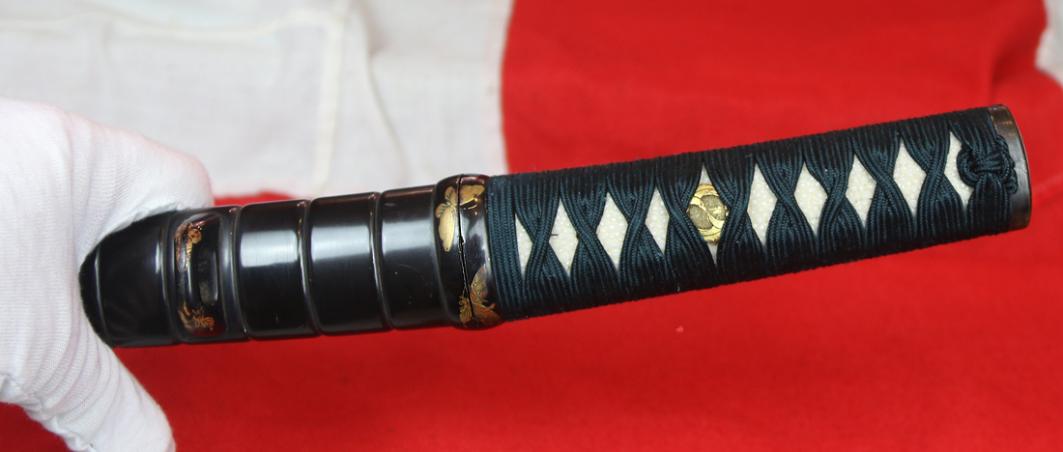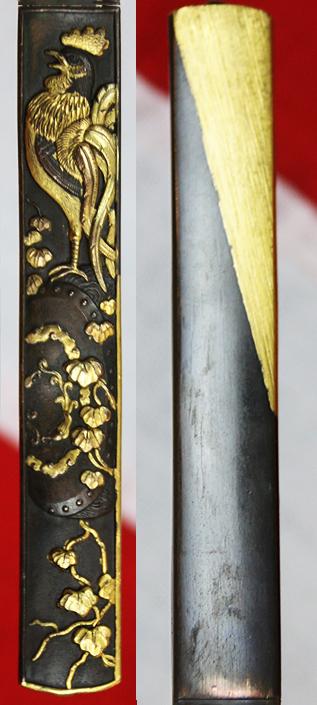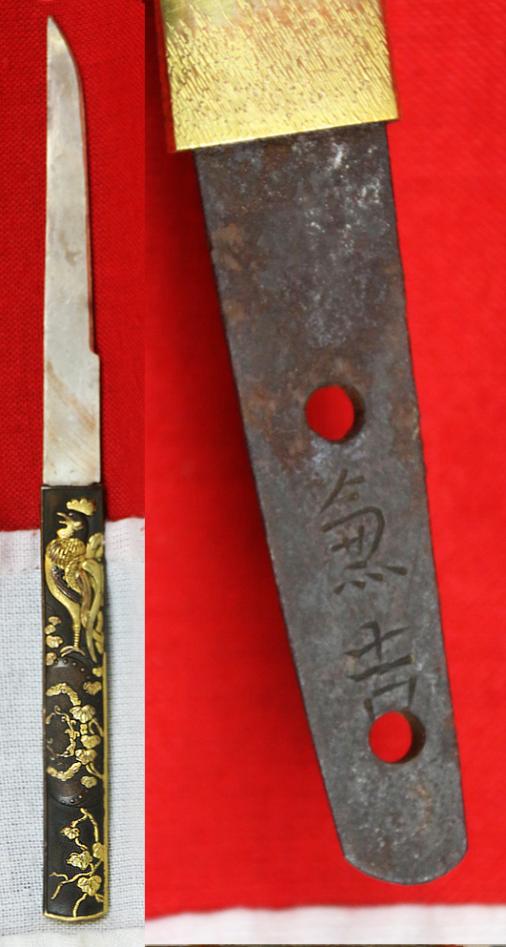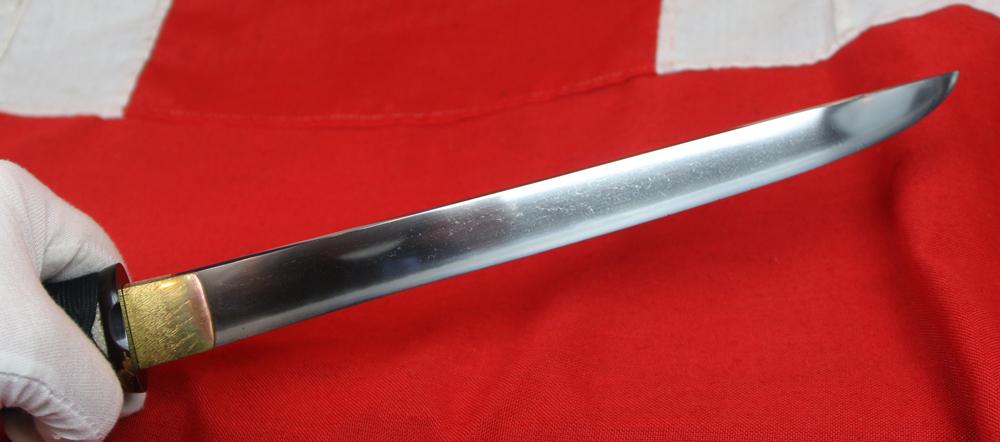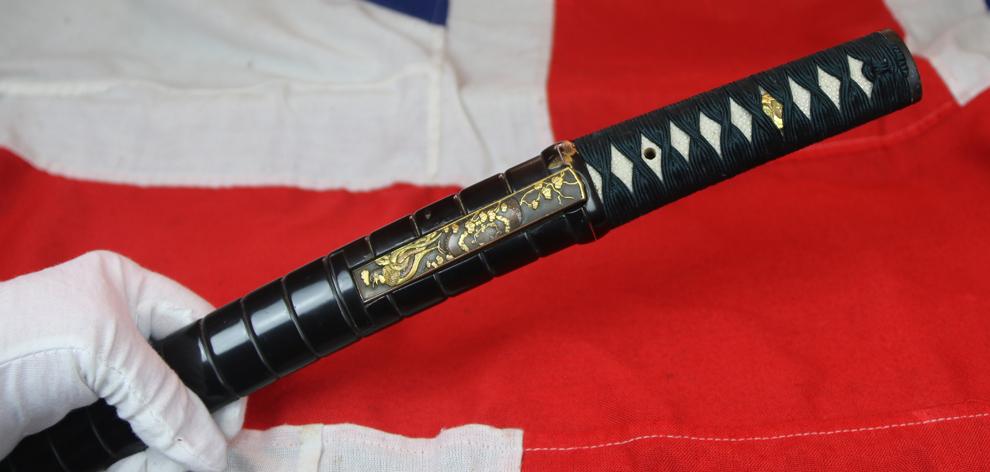Truly A Samurai Tanto of Museum Grade & Quality. Worthy of the Finest Collection. A Stunning Samurai Aikuchi Tanto With An Around 500 Year Old Blade, Signed Kaneyoshi,
THE LANES ARMOURY, Supplying The World’s Collectors for Over a Century. We offer to you to view on our website all of our wonderful and exciting pieces, that we have the tremendous privilege of owning, even for just a brief period, and offering them to discerning clients around the globe. For example, we have one of the largest selections of original, antique and ancient Japanese weaponry for sale in the country, if not the world, and we have been doing so for just over 100 years. It’s our experience, based over generations, that we offer to all our clients, based on our established, world renowned traditions, offering wondrous delights, that we believe, one can simply not see in such incredible variety anywhere else in the world.
This is a simply fabulous tanto with its simply stunning and sublime full suite of original Edo period koshirae fittings including, the finest ‘lobster scale’ lacquer saya, decorated, with fantastic skill, and the fittings decorated with hand painted pure gold lacquer butterflies throughout, and its saya pocket is complete with a very fine quality shakudo and pure gold kozuka utility knife, decorated with a gold cockerel on a taiko war drum. The ‘cockerel on a drum’ is a combination often seen in netsuke art (or other forms of Japanese art), representing a symbol of peace and contentment, as legend says that a war drum was lying around for so long (during unusually peaceful times of the Edo period) that hens and roosters began to live in it. The rooster, is carved with the most finely carved plumage you can imagine. The skill of the craftsmanship is breathtaking. The Japanese believed that butterflies were the souls of people, according to Lafcadio Hearn in his book Kwaidan. Hearn wrote that the belief that butterflies were human souls was so popular that when a swarm of butterflies appeared over Kyoto just before a huge rebellion was about to take place, the Japanese took it as an omen that they represented the souls about to perish in the battle to come.
There were numerous important connotations of the butterfly in life in Japan------if a butterfly came through your screen door, it was said that the one you loved the most would soon visit. However the moth, like the butterfly, can be a symbol of the psyche. But, unlike the butterfly, it does not usually carry the sense of the psyche's rebirth.The tanto was designed primarily as a stabbing weapon, but the edge can be used for slashing as well. Tanto are generally forged in hira-zukuri style (without ridgeline), meaning that their sides have no ridge line and are nearly flat, unlike the shinogi-zukuri structure of a katana. Some tanto have particularly thick cross-sections for armour-piercing duty, and are called yoroi toshi. The tanto was invented partway through the Heian period. With the beginning of the Kamakura period, tanto were forged to be more aesthetically pleasing, and hira and uchi-sori tanto becoming the most popular styles. Near the middle of the Kamakura period, more tanto artisans were seen, increasing the abundance of the weapon, and the kanmuri-otoshi style became prevalent in the cities of Kyoto and Yamato. Because of the style introduced by the tachi in the late Kamakura period, tanto began to be forged longer and wider. The introduction of the Hachiman faith became visible in the carvings in the hilts around this time. The hamon (line of temper) is similar to that of the tachi, except for the absence of choji-midare, which is nioi and utsuri. Gunomi-midare and suguha are found to have taken its place.
During the era of the Northern and Southern Courts, the tanto were forged to be up to forty centimetres as opposed to the normal one shaku (about thirty centimetres) length. The blades became thinner between the uri and the omote, and wider between the ha and mune. At this point in time, two styles of hamon were prevalent: the older style, which was subtle and artistic, and the newer, more popular style. With the beginning of the Muromachi period, constant fighting caused the greater production of blades. Blades that were custom-forged still were of exceptional quality. As the end of the period neared, the average blade narrowed and the curvature shallowed. 22 inches long overall, blade 11.5 inches. The blade has three miniscule edge combat cuts, it would be fascinating to know their origins. Over the 500 years it has been repolished, but they have consistantly left the tiny edge cuts as signs of honourable combat scars. Maybe created in a most significant hand to hand combat of an ancestral owner. See photo 8 in the gallery, they are so small to be near invisible to the naked eye.
Code: 23538
7750.00 GBP


